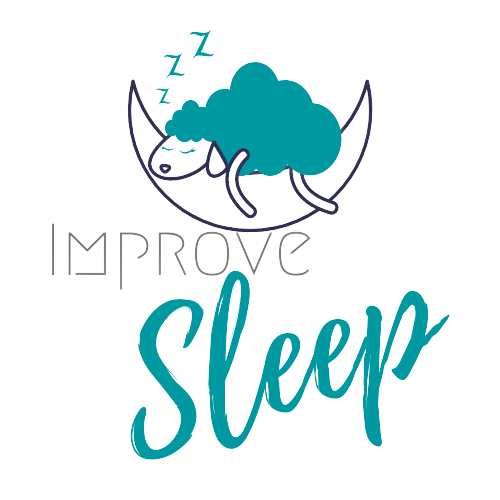When do you dream? The psychology of sleep is rather interesting. You fall asleep and what happens before you wake up is mainly unknown to you.
Many remember what they dreamed about, but some claim they didn’t dream or cannot remember what the dream was about.
Believe it or not, everyone dreams. It’s a way of maintaining brain activity since the brain does not go to sleep. Here, you will get to demystify all myths regarding dreaming, find out what stage of sleep do you dream, and uncover all there is to know about dreaming stages.
The Different Sleep Stages

There are two basic types of sleep; REM, which means Rapid Eye Movement, and non-REM, which is the opposite of the former, meaning rapid eye movement doesn’t occur during this type of sleep.
These can be better explained in the following stages:
Stage 1
As your body transitions from a state of wakefulness to sleep, this is referred to as non-REM sleep.
This short period involves light sleep, where your heartbeat, breathing, and eye movements get slower. Your muscles also relax with occasional twitching being witnessed.
Your brain activity begins to slow down, too, from its daytime patterns.
Stage 2
You are still in non-REM sleep. Breathing and your heartbeat are at a slow pace, preparing you to get into a deep sleep.
At this stage, the temperature of your body drops, and eye movements stop.
Brain activity slows further, but you experience moments of electrical activity.
You spend relatively more time in this stage than any other while you’re asleep.
Stage 3
This is the last of non-REM sleep. It is a period of deep sleep that leaves you feeling refreshed and rested in the morning.
By this time, you have spent a bit of time in bed. Your heartbeat and breathing rates go to their lowest levels.
It may be challenging to wake you up at this point because your muscles are incredibly relaxed, your brain waves even slower.
Before transitioning into the next stage, your body takes advantage of this time to strengthen your immune system, repair muscles, regenerate body cells, and perform other vital functions.
REM Sleep
About 90 minutes after falling asleep, you experience your first REM sleep.
This stage encompasses rapid eye movements behind closed eyelids. Your brain starts receiving mixed frequencies to prepare you for wakefulness.
Here, breathing becomes faster, though irregular, and your heart rate and blood pressure increase.
REM Sleep vs. Non-REM Sleep
As witnessed above, you go through a loop of REM sleep and non-REM sleep until it is time to wake up. Each stage takes about 90 to 120 minutes.
Your body is not in a constant state, though you do not get to feel anything that’s happening while you’re semi-unconscious.
Both stages are essential for you. The progression from non-REM to REM must be as seamless as possible to prevent shocking your body since it’s all a planned process.
Non-REM sleep plays a pivotal role in learning and memory processes and is regarded as the most restful phase of sleep.
So, what stage of sleep do you dream? Dreaming During REM Sleep
REM sleep dreaming is facilitated by temporary paralysis.
Do not be alarmed since this occurs as your body gets ready to transition into dreaming sleep.

According to experts, humans spend about two hours dreaming every night. That seems like a long time since you only remember bits and pieces of your dreams.
You can remember REM dreams vividly, and if someone was to wake you up during this stage of sleep, you are most likely to remember you were dreaming.
Most people have had their REM dreams cut short at this stage of their sleeping cycle since this is the stage where your brain formulates all manner of realistic and non-realistic dreams.
Contrary to this, if someone wakes you up during non-REM sleep, you are far less likely to feel as if you just came out of a dream.
This is because your body has not gone through the whole process of relaxation and semi-consciousness.
Controlling REM Dreams
Several conditions influence REM dreams.
Some of these are not favorable, resulting in nightmares and, in some cases, sleep paralysis. The brain is a powerful organ in the human body, and it might be proper to control dreams if you need to.
During the REM stage, you are closer to wakefulness. You are, therefore, more likely to be aware that it’s just a dream and not reality.
This is necessary for the control and avoidance of night terrors that affect both children and adults. The following are tips to try to increase awareness when you have REM dreams:
- The Wake Back to Bed Method
With this method, you set your alarm to wake you shortly after sleeping. It can be five hours post-bedtime.
When your alarm goes off, stay up for about 20 minutes, and do a relaxing activity such as reading a book.
When you go back to sleep, you are most likely to have a lucid dream (one that occurs when you know you are dreaming).
- Dream Journaling
Keeping track of your dreams helps you remember them. Once you do this, it gets easier for you to recognize that you are experiencing dreaming sleep.
If you have disturbing dreams that might lead to sleep paralysis, practice this, and read your journal right before you get into bed. It is an excellent way to condition your mind.
- Mnemonic Induction of Lucid Dreams
By reciting repetitively out loud to yourself that you are dreaming, your mind believes so. You set this intention ahead of time so that you remember it even when you are asleep. To wake up, try going to sleep in the dream you are having, blinking, or speaking out loud. Unbelievably, these work wonders to get you awake and alert and out of dreaming sleep.
Summary
A good night’s sleep is pivotal for normal brain and body functioning. Your body and brain go into cycles of sleep that work together to ensure you have utmost rest.
Dreaming is an unavoidable experience, and if you were wondering what stage of sleep do you dream, you have your answer now.
REM sleep facilitates REM dreams that are vivid and easier to remember than the few non-REM dreams you have. As a result of activities in the daytime, dreams can be mild or wild. However, there are proven methods that have been discovered to improve sleep and even control your dreams.
Dreaming stages are unbelievably captivating to study, and more surprising facts continue to crop up about sleep cycles.






[…] result is restful, restorative, and resolute sleep. As you’ll come to learn, a night of restful, deep sleep is key for maintaining good […]
[…] is possible to dream during light sleep. However, these dreams aren’t as cohesive or story-like as those […]
[…] understand sleep as one compact event occurring when in bed at night, scientists describe it as a cycle of four stages. When asleep, our bodies repeatedly cycle between the N1, N2, N3, and rapid eye movement (REM) […]
[…] you sleep, your brain cycles through four stages of sleep. The first three are regarded as non-rapid eye movement (NREM) sleep, also known as quiet sleep. […]
[…] theory suggests that dreams serve as a way to process difficult emotions and experiences. When we are unable to process our […]